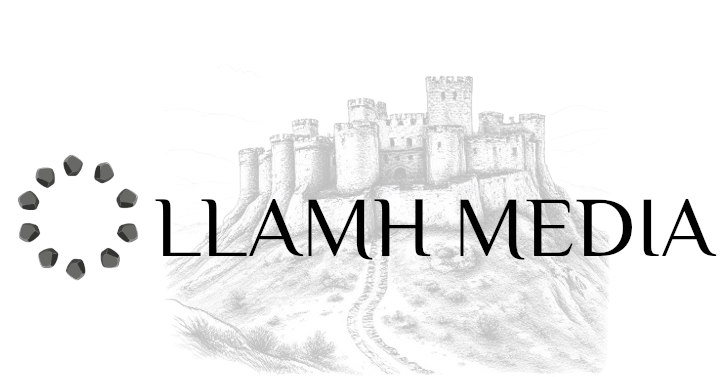We find ourselves well within the digital revolution. Though E-Learning is still in its infancy. However, it is safe to say that what we call ‘culture’, within a western context is to be found online. However, is this culture being create consciously? In years to come, what will our descendants think of us? What will we leave behind for them to contemplate upon?
Within a classical context, culture was generally created by those of the aristocratic classes. Why? Simply because they had the time. They had the time to reflect, philosophise and create artistic expressions. This can be seen in the form of the architecture, literature and art left behind. So, how did members of the aristocratic class prepare to become these ‘culture creators’?
Well firstly, they did not need to work the menial jobs of the lower classes and they would receive what is known today as a ‘classical education’. In fact, I expect that most politicians and governors also study these concepts before obtaining office. This classical education is cultural not vocational. However, it may be used vocationally as we will see.
Firstly, I would like to introduce you to the concept of ‘Paideia’.

What is Paideia?
Paideia, the ancient Greek concept of education, was a holistic approach to nurturing a well-rounded individual. Originating in Athens around the 5th century BC, it emphasised the development of both intellectual and moral virtues. Paideia was designed to cultivate a citizen who was not only knowledgeable but also virtuous and capable of contributing meaningfully to society. The curriculum included a mix of philosophy, rhetoric, music and physical education. This in turn, produced a range of students who were thoughtful, ethical, and physically competent.
However, as societies developed, so did educational systems. In the 19th and 20th centuries, the rise of industrialisation and specialisation led to a shift towards more narrowly focused curricula. The education system now deemed virtue surplus to requirements. The modern education system increasingly prioritises standardised testing and vocational training. This shift often emphasises measurable outcomes and job readiness over the broad, integrative learning that characterised paideia. The focus on standardised testing has led to a narrowing of the curriculum, where subjects that are not easily quantified, such as the arts and critical thinking, are often deprioritised. To summarise, this methodology results in an educational environment where students are trained to pass tests rather than to think critically, engage deeply with diverse subjects or develop a well-rounded character.
The PRESSURE to produce economically has diminished the emphasis on fostering moral and ethical development, which was absolutely central to paideia. The sense of a civic responsibility has also become defunct within the educational environment. It is clear that this utilitarian approach, focusing heavily on standardised testing and vocational training, has arguably led to a narrowing of educational objectives, often at the expense of broader intellectual and moral development.
The Birth of the Schooling System
The modern school system’s evolution is due to the processes of industrialisation that began in the 18th and 19th centuries. The rapid industrial and economic changes brought by the Industrial Revolution necessitated a shift in educational priorities and methods.
As industrialisation progressed, societies needed a workforce that was not only larger but also more skilled and disciplined. The modern schooling system was the response of industrialised societies. The main goal was to produce a worker who would increase profit, rather than an individual who would aid society holistically. A new dichotomy was born, the dichotomy of the worker and the factory/company owner. A relationship that mirrors the Spartans and Helots of antiquity. However, this culture of ‘capitalism’ did not produce great military leaders or philosophers amongst this new leisure class. Instead, it seems that these factory owners only used their profits and free time to create more profit, destroying the land and our historical understanding of self.
One other point of interest to consider is the centralisation of the schooling system. Governments took on a larger role in funding and regulating education. All children were to receive an education, thus creating a more uniform and predictable workforce. The introduction of compulsory education laws in many countries further underscored this shift, mandating that all children receive basic schooling. This influence is evident in the design of school buildings and the structure of the school day, which often reflect the routines and hierarchies found in industrial workplaces. For example, classrooms were designed to accommodate large groups of students, and the school day was organised into fixed periods, much like a factory shift.

Classical vs Modern Education
Classical education and modern education represent two distinct paradigms of teaching and learning, each reflecting different societal values and educational goals. Rooted in ancient Greece and Rome classical education focuses on the cultivation of virtue, critical thinking, and the pursuit of wisdom. It emphasises a broad-based curriculum that includes the study of language, literature, philosophy, history and rhetoric. The overall aim is to develop well-rounded individuals who can think deeply, reason logically and engage in meaningful discourse. The curriculum is structured around the trivium (grammar, logic and rhetoric) and the quadrivium (arithmetic, geometry, music and astronomy). This methodology promotes a comprehensive approach to knowledge.
In contrast, modern education as mentioned previously emphasises practicality and standardisation. Heavily influenced by the needs of industrialisation, the core aim of modern education is to produce the core workforce of society. However, modern education also prioritises skills such as critical thinking and problem-solving, though reserved within the context of achieving academic and career-oriented goals.
In my own opinion, the most striking difference between classical and modern education is the emphasis on shaping the students character. Classical education places a very strong emphasis on moral and ethical development, aiming to cultivate virtues and a sense of civic responsibility. Modern education, often focuses more on personal success within the confines of a structured career path.
E-Learning & The Future of Education
The advent of e-learning has the potential to revive classical education by making its principles more accessible and adaptable to modern contexts. Classical education, with its focus on critical thinking and character cultivation will benefit from digital platforms and the online communal space.
E-learning tools, such as online courses, education apps, and virtual classrooms, provide access to classical texts, languages and pedagogical methods that were once limited to specialised institutions. The flexibility of e-learning allows for personalised learning paths. Students can delve deeply into subjects of interest at their own pace, fostering their intellectual curiosity.
In essence, e-learning DEMOCRATISES access to a NEO-CLASSICAL education, bridging the gap between traditional academic ideals and contemporary needs.
The Industrial age is ending, the digital age is commencing. With that in mind, we really do find ourselves at the precipice of a great transition. Is there a better time to REVIVE what we lost when education fell victim to industrialisation than now? An alternative education, cultivating individuals to follow their passions, refine their character and create content. Education which will prepare you for the work of the future, creating culture through your personal brand.


